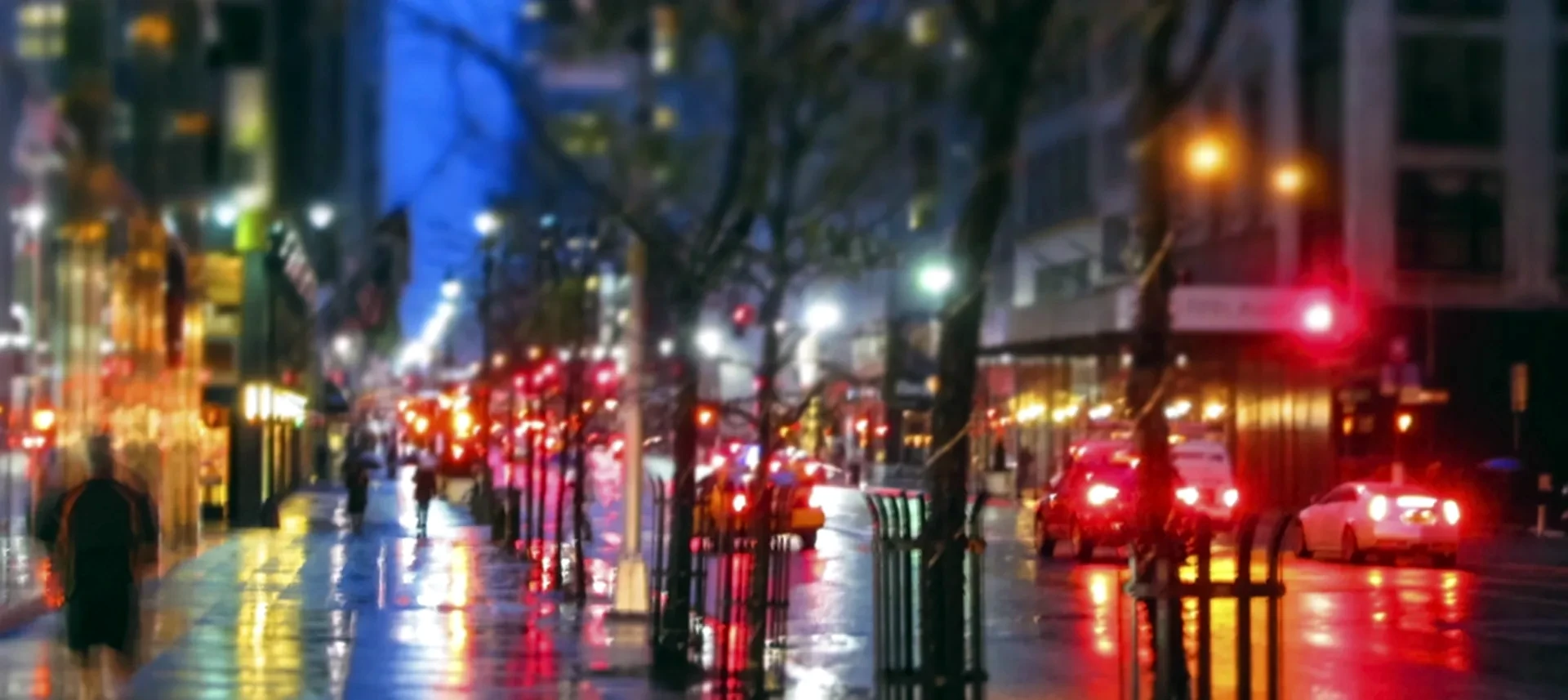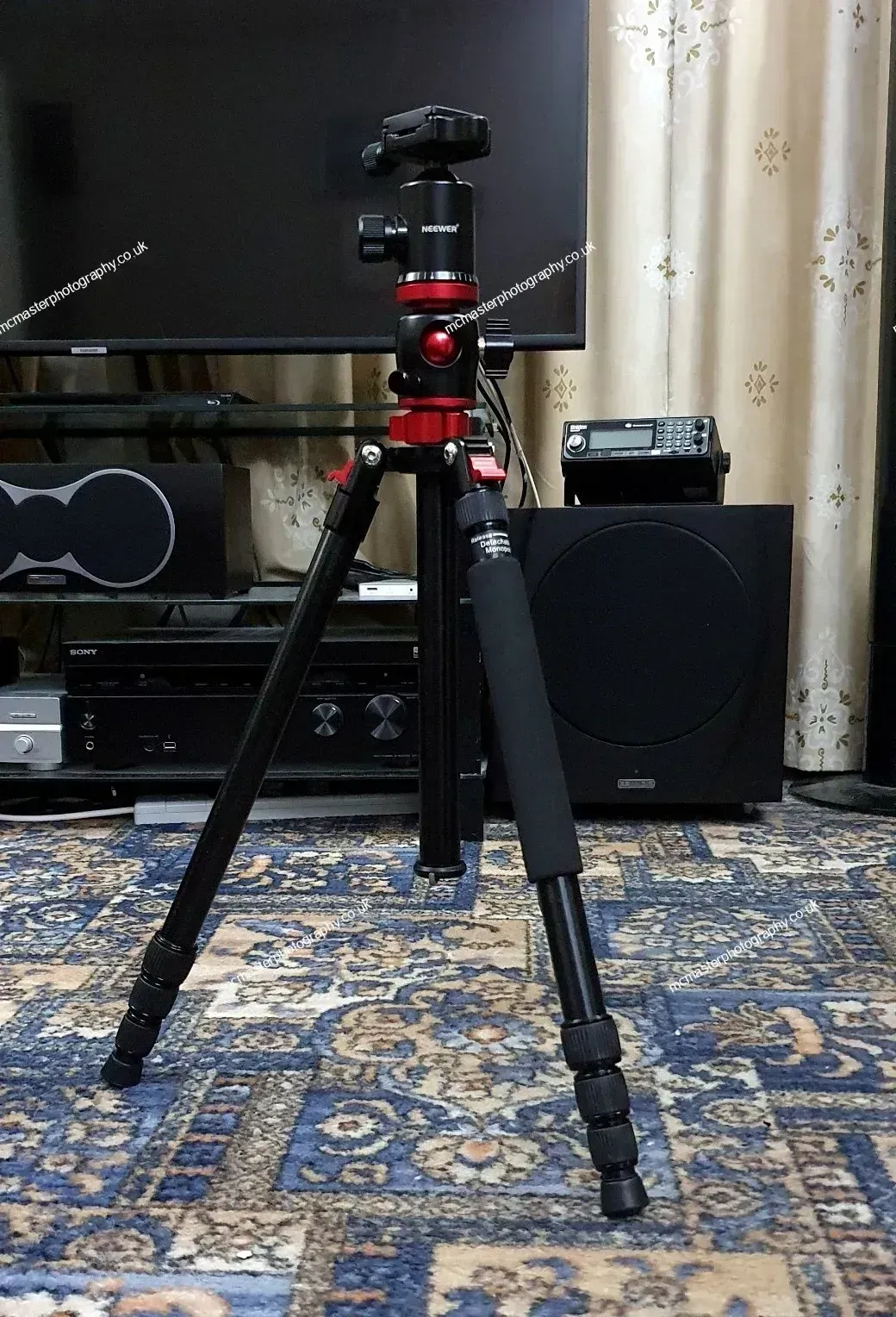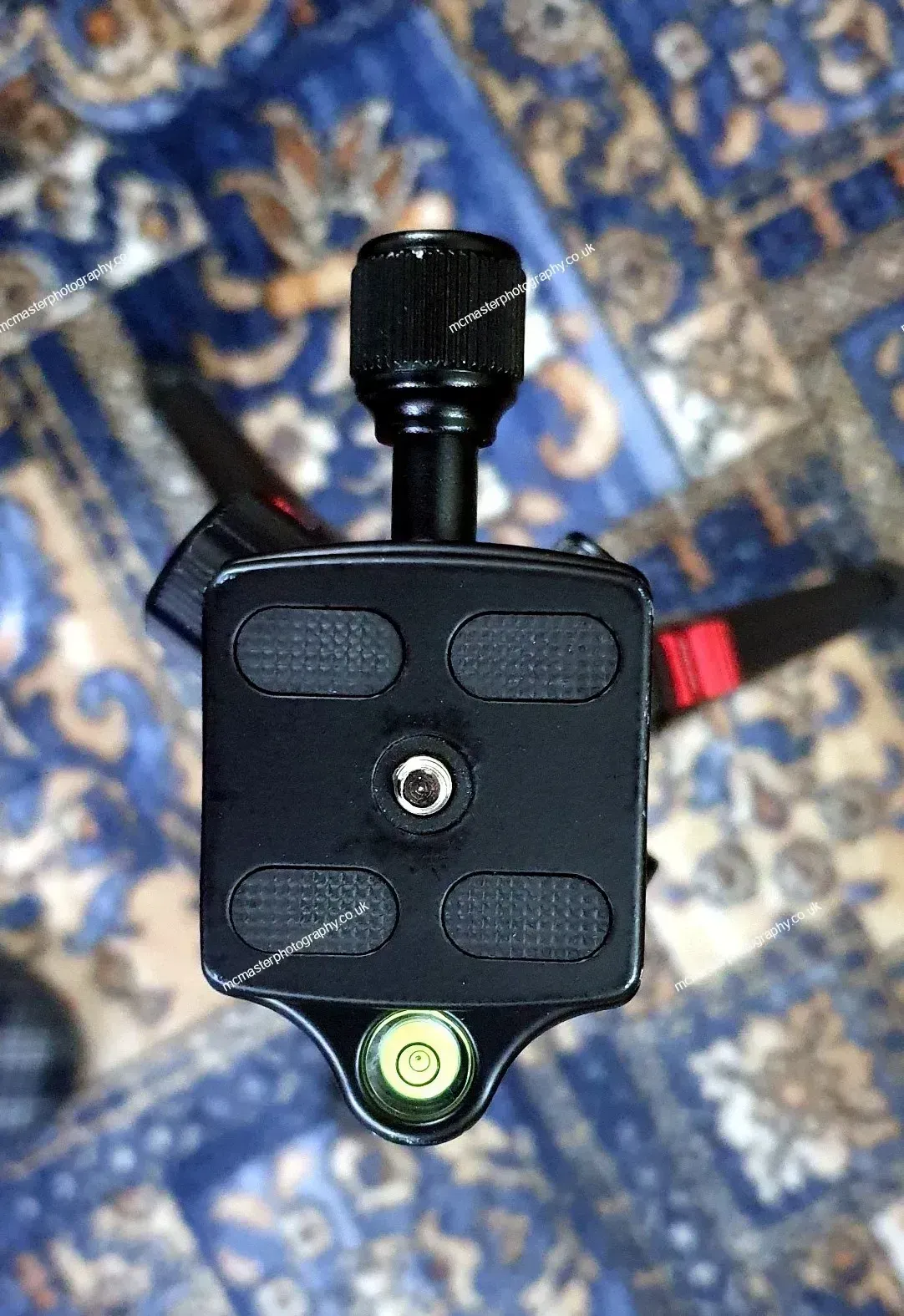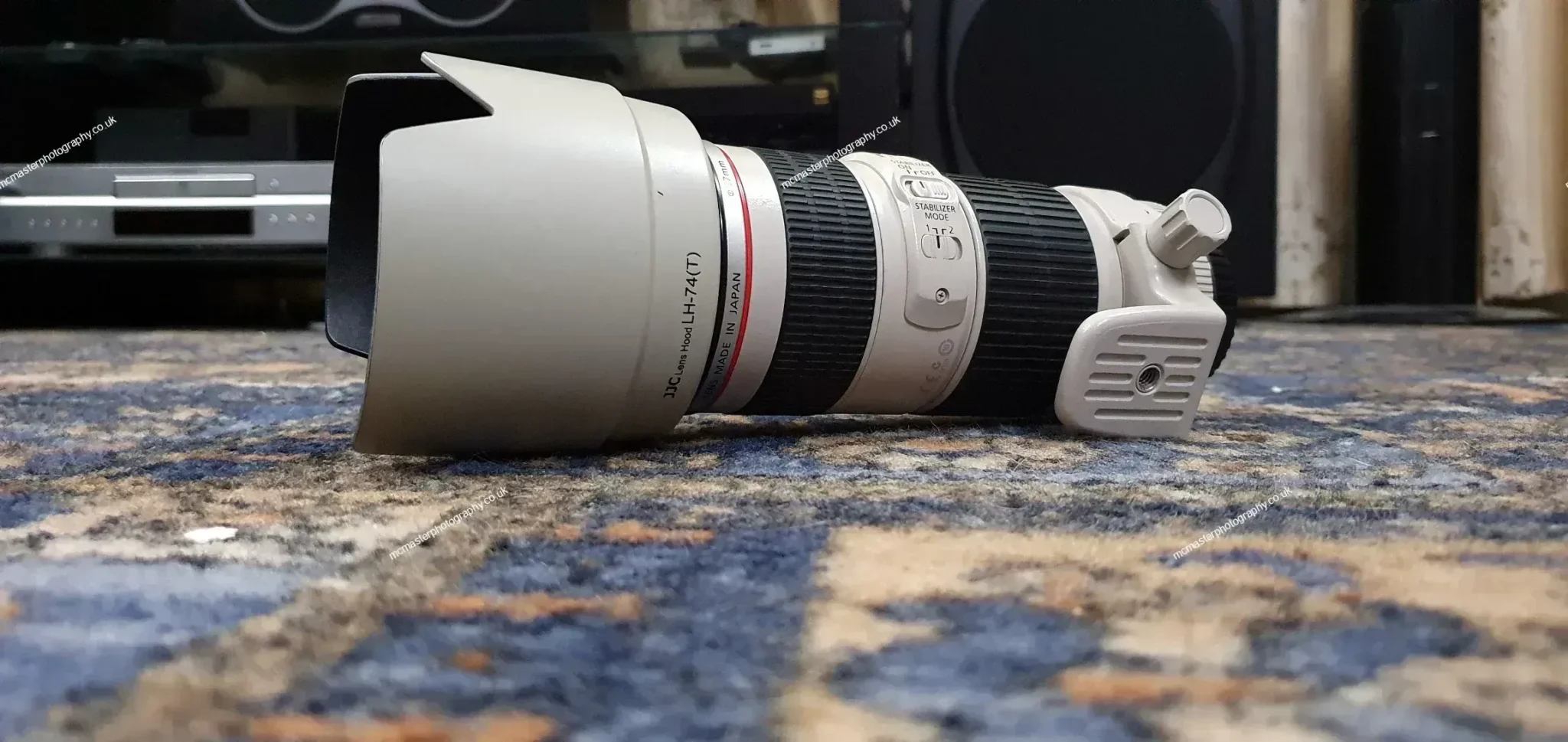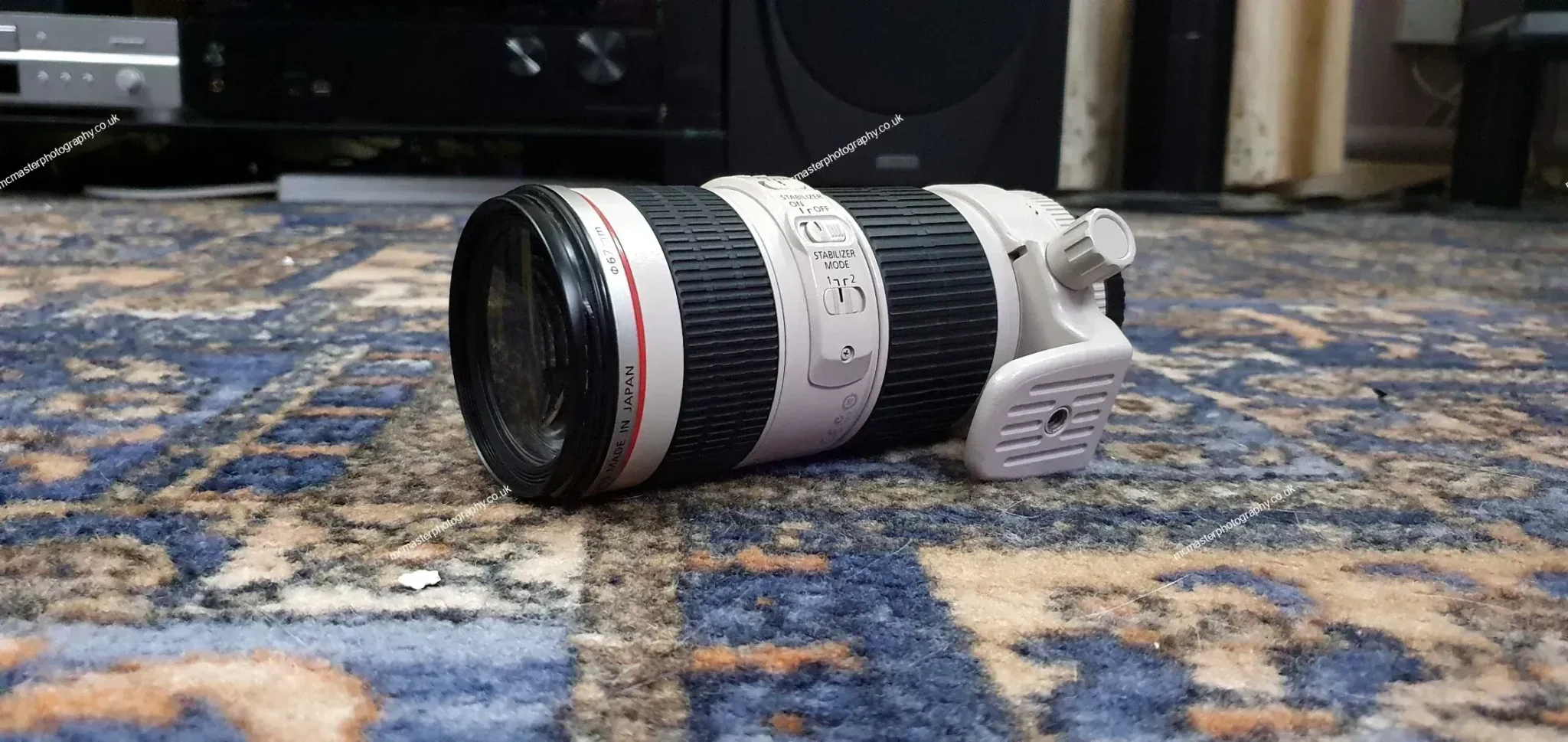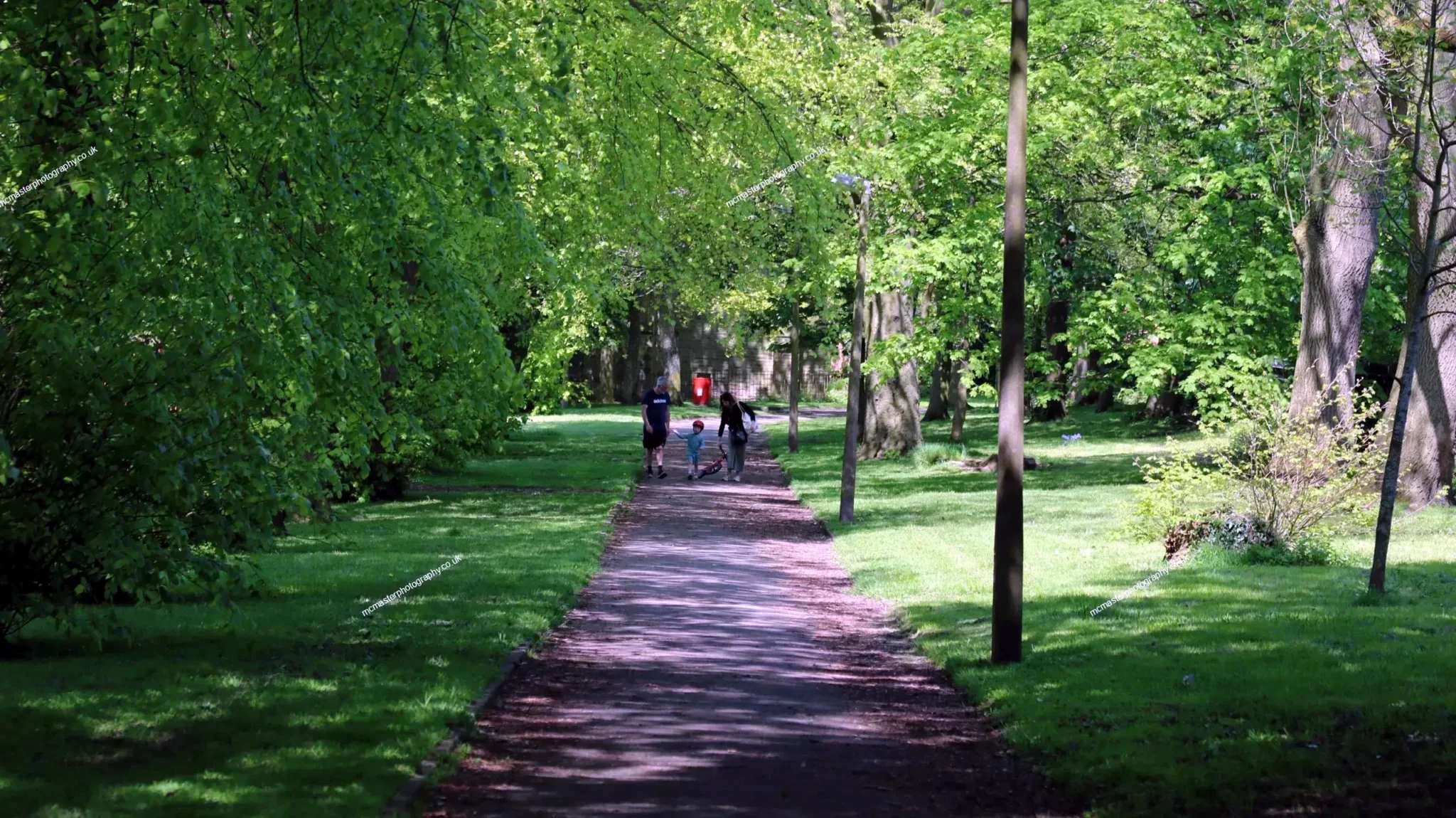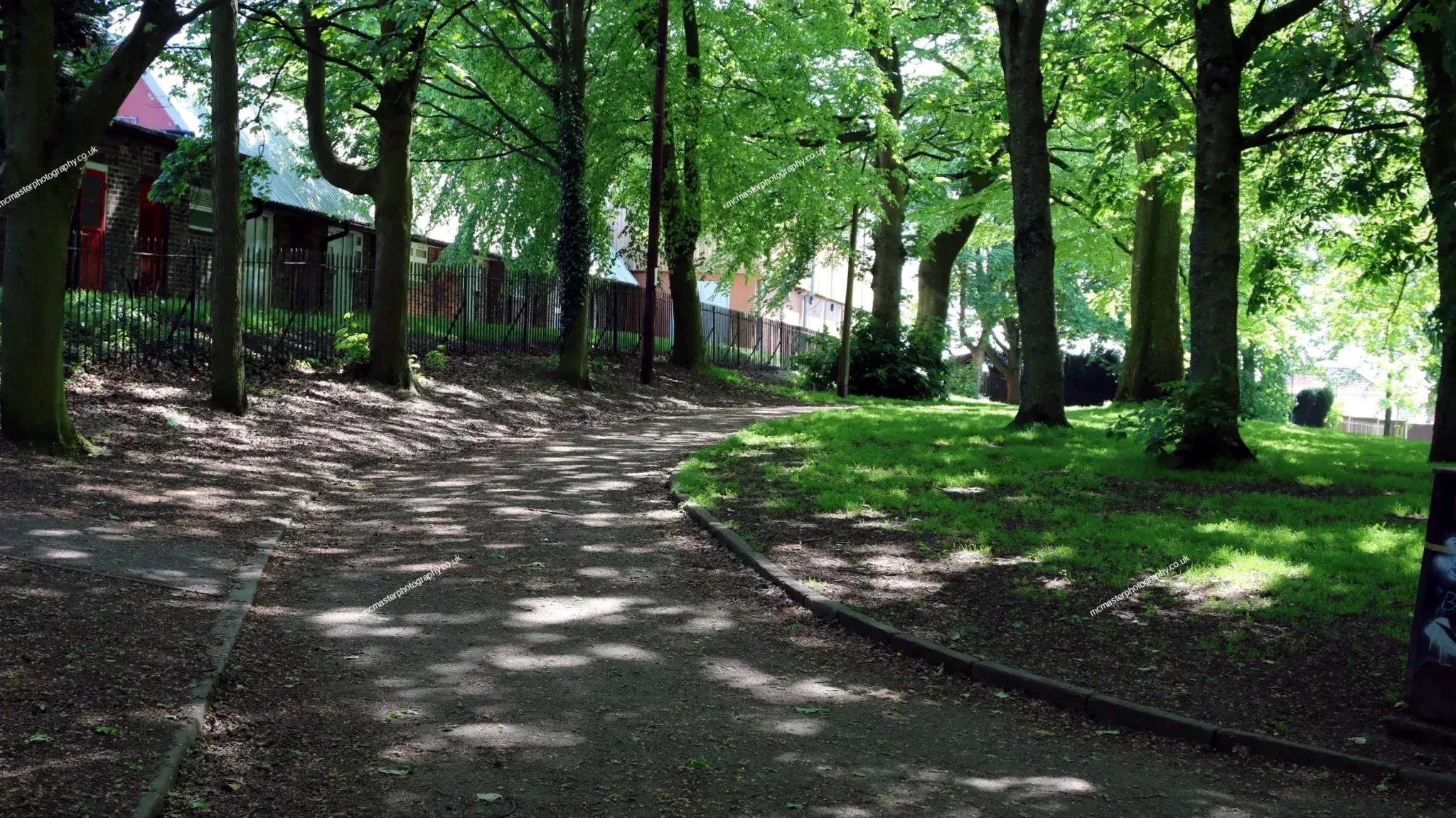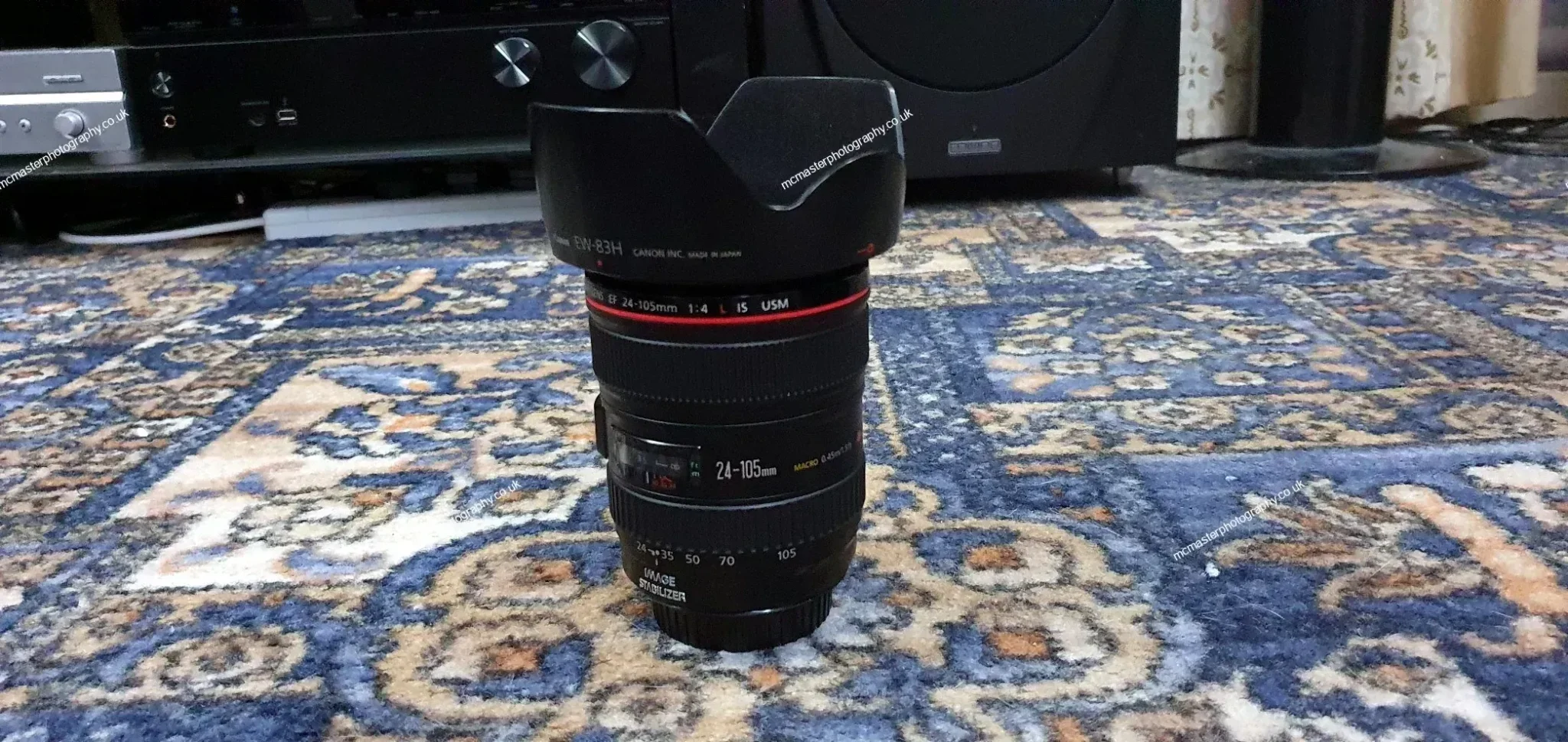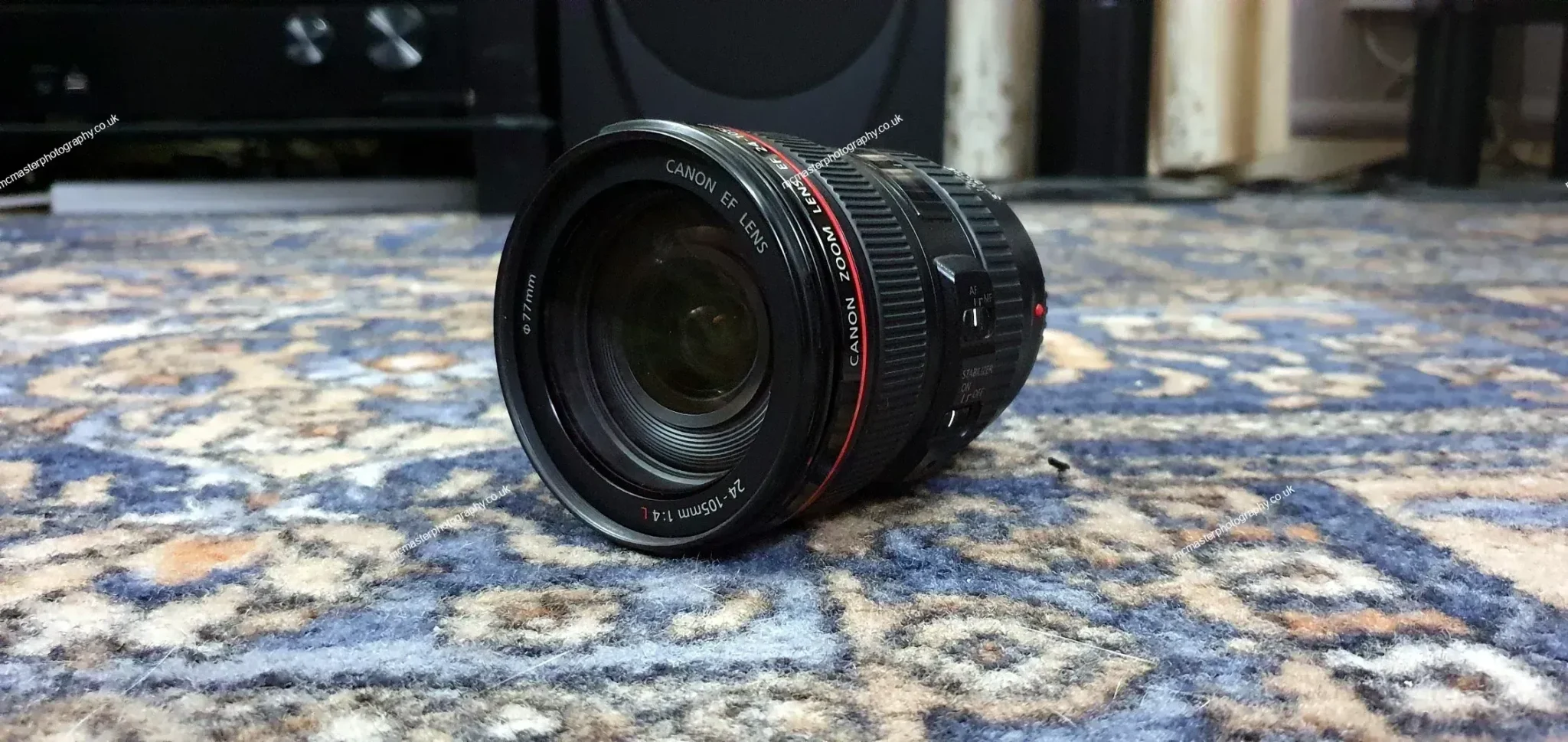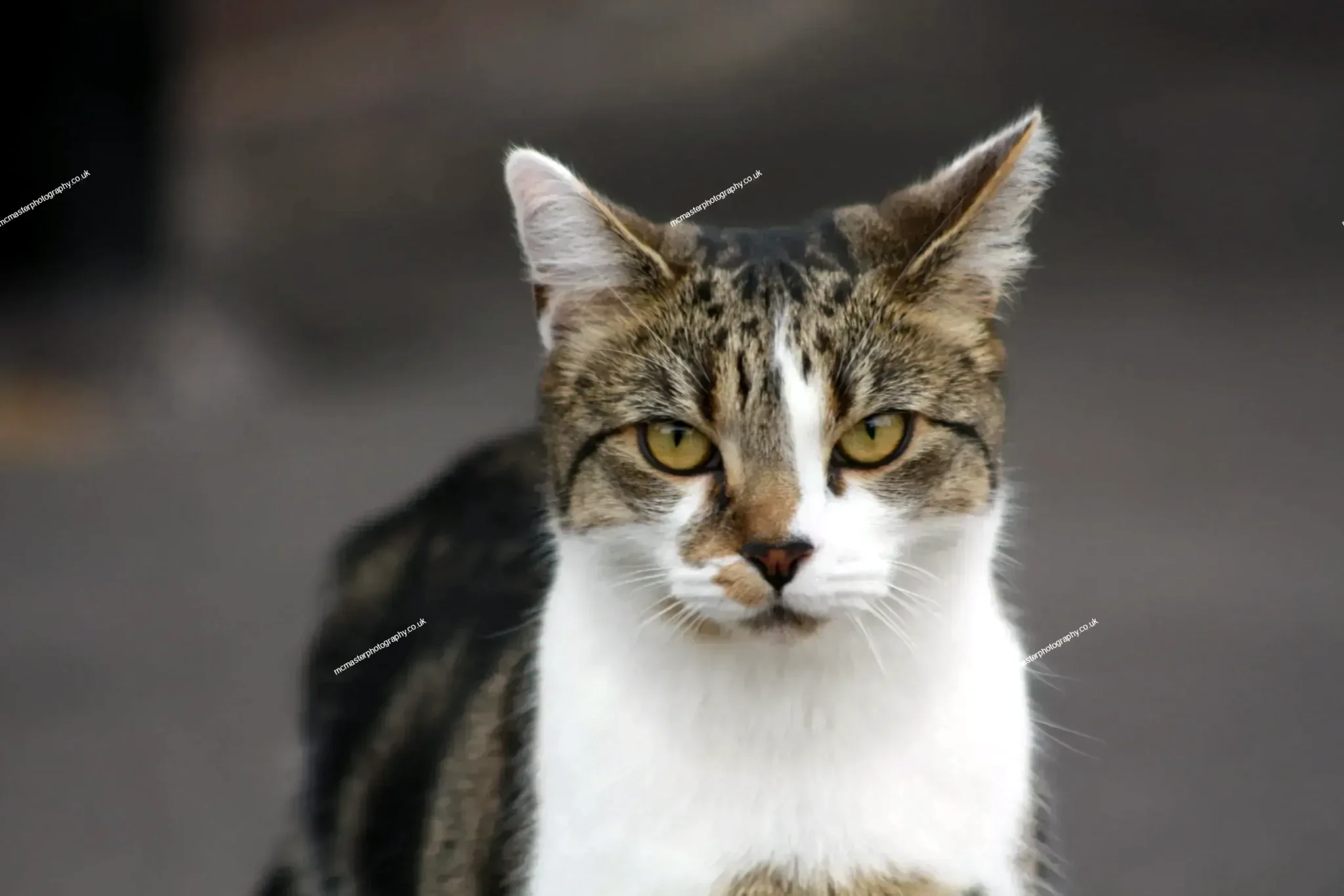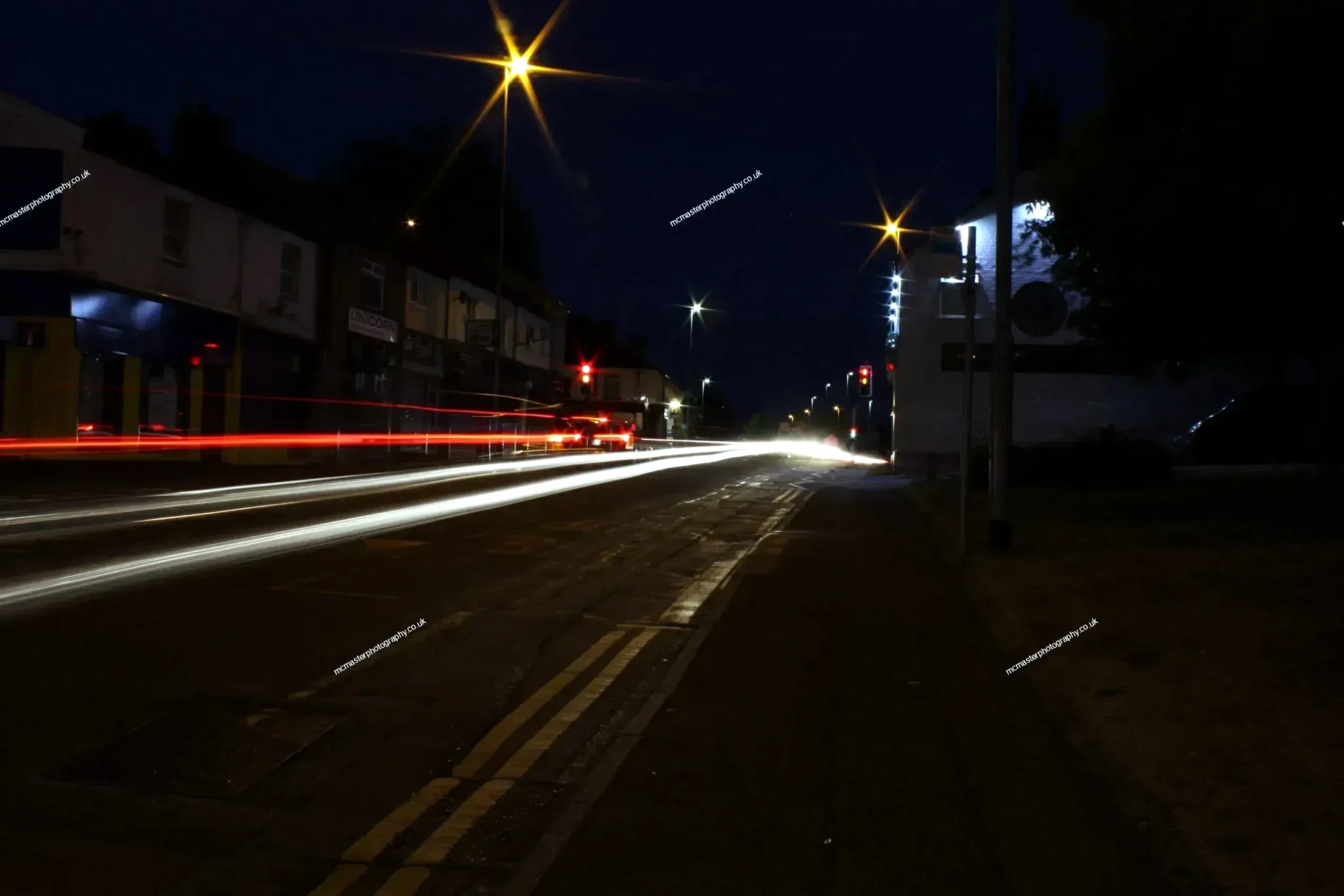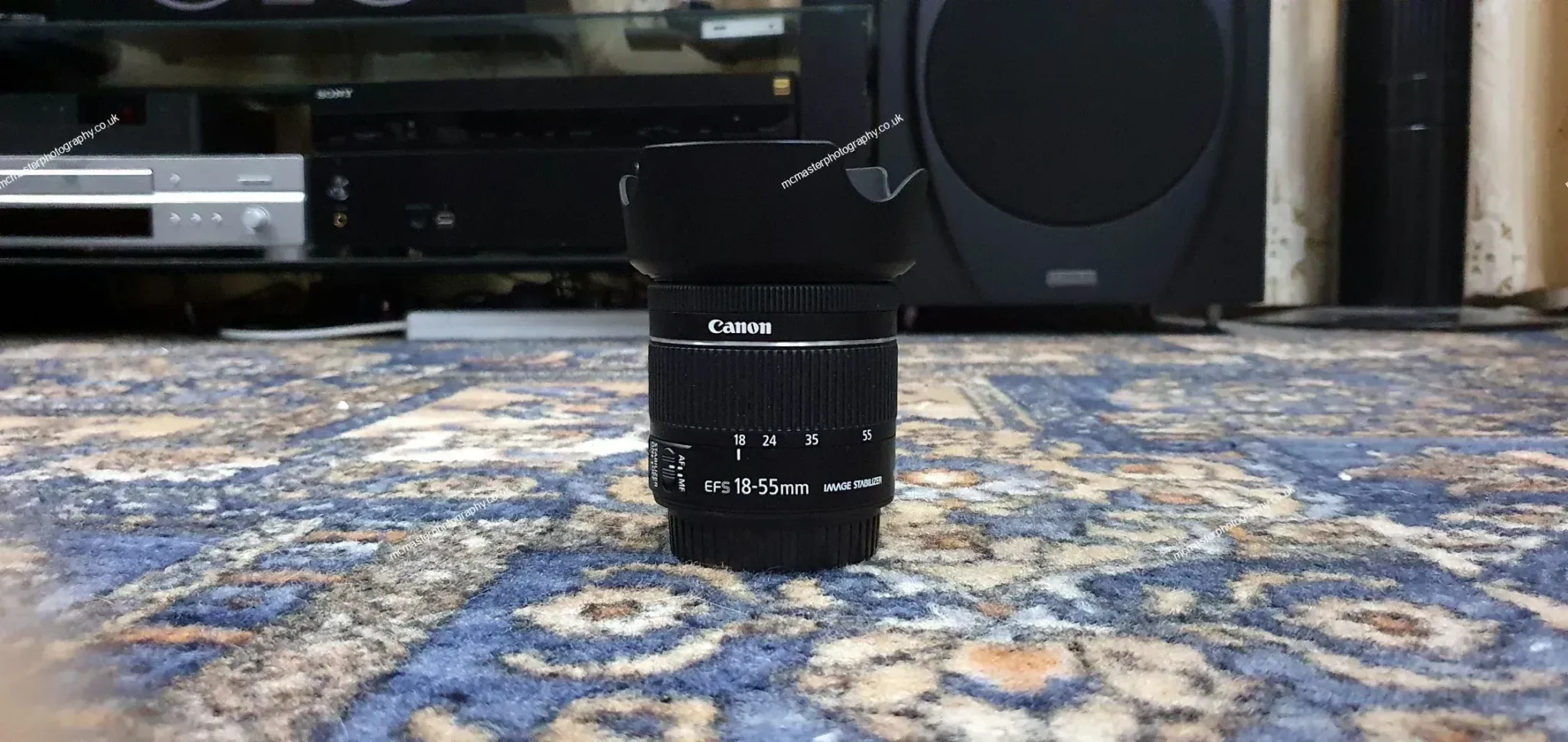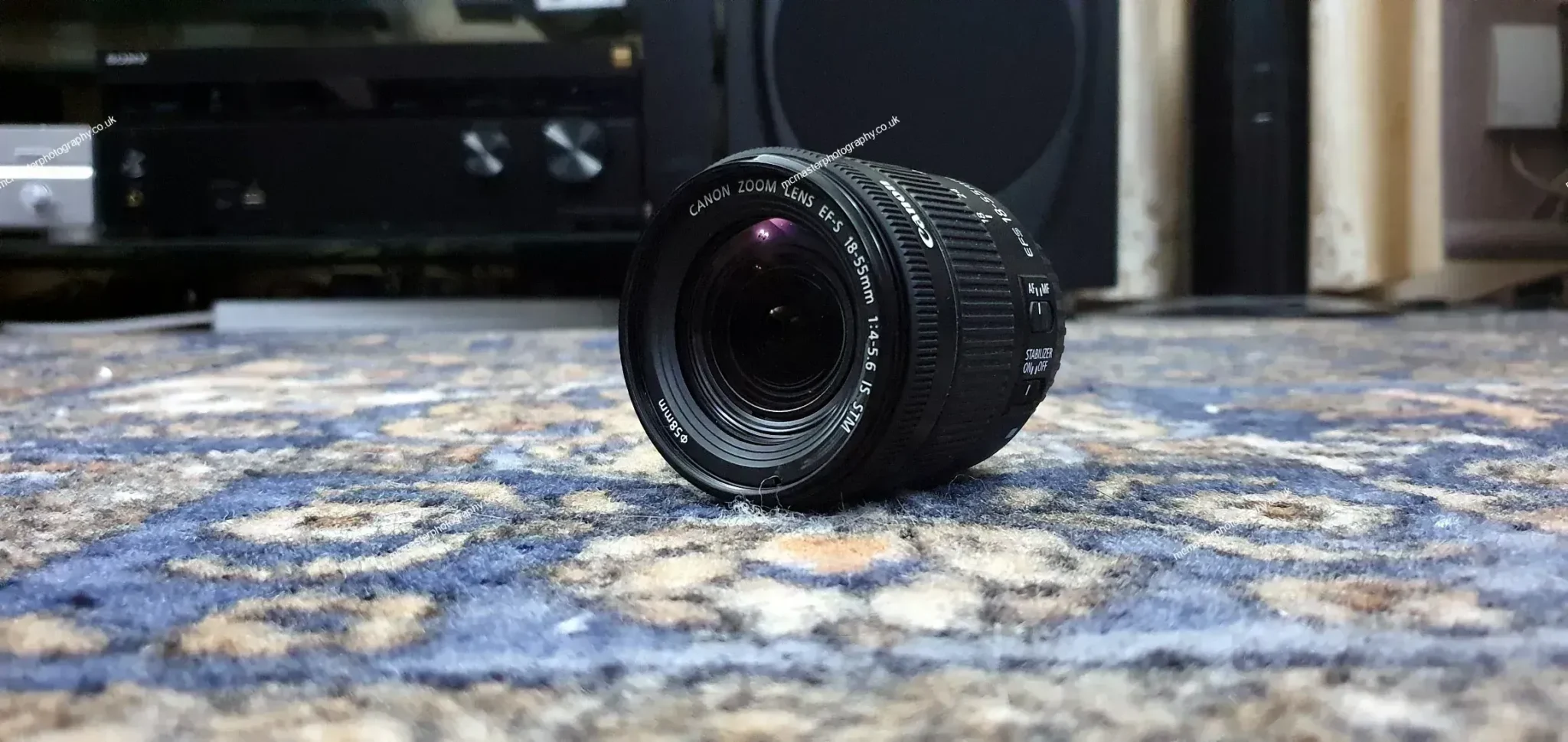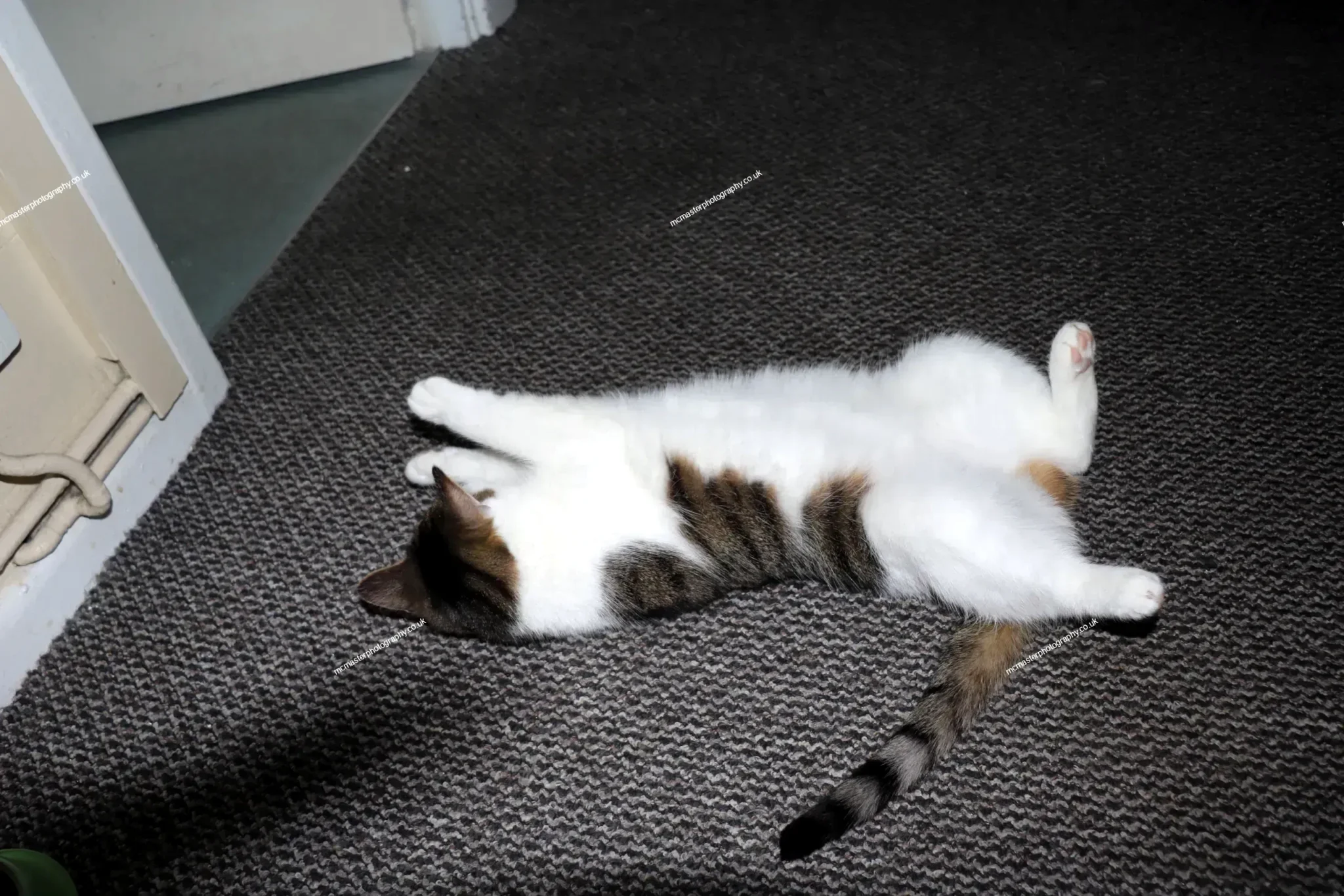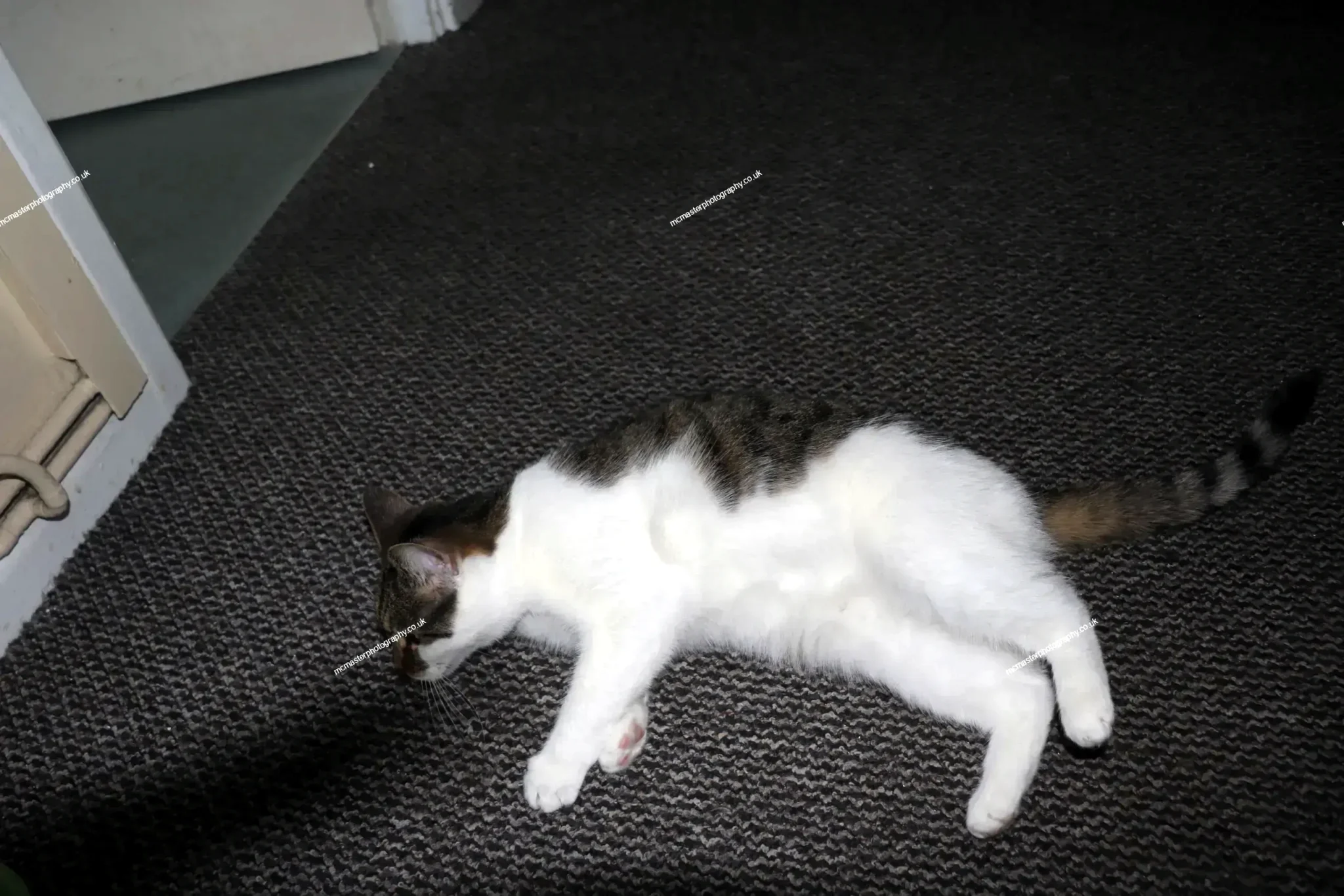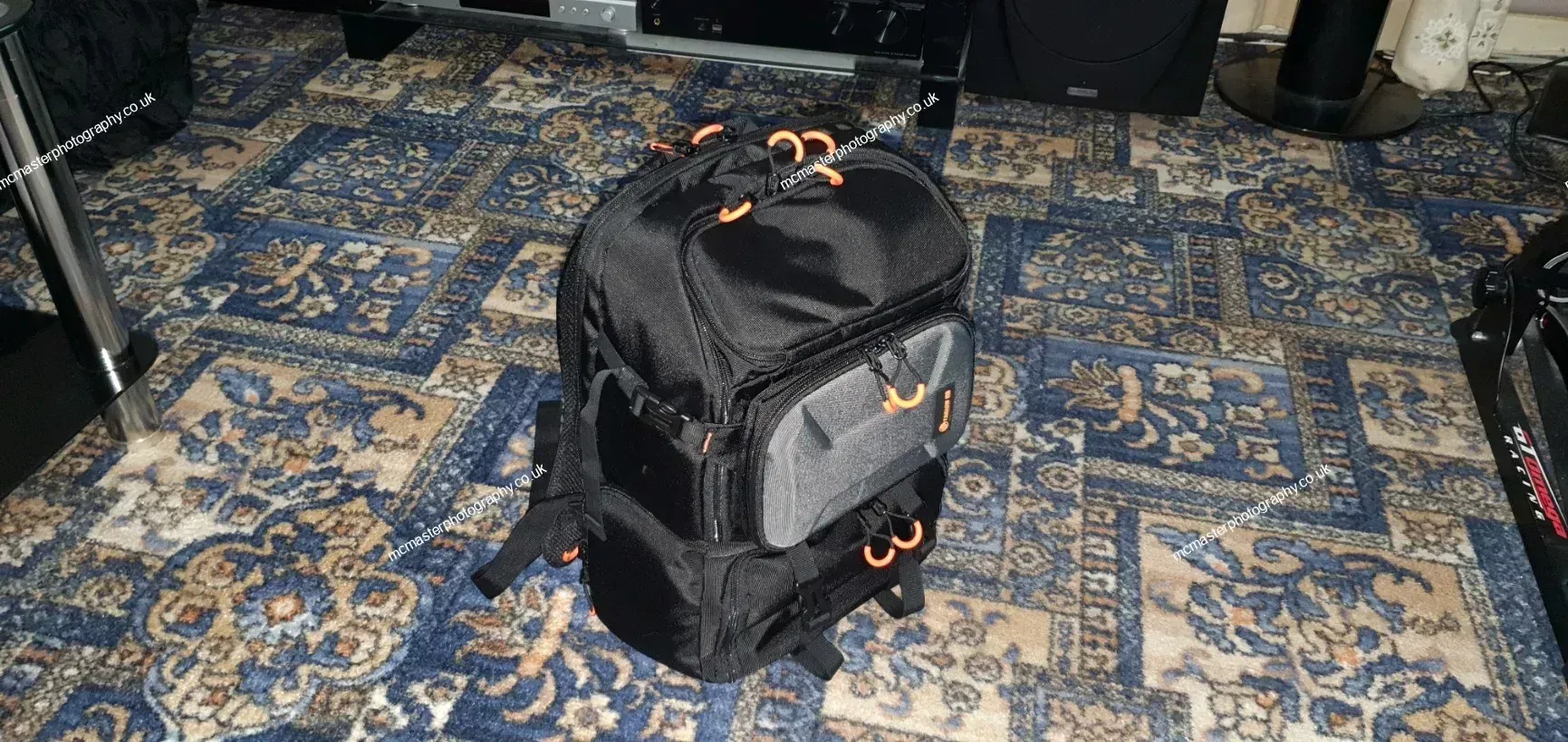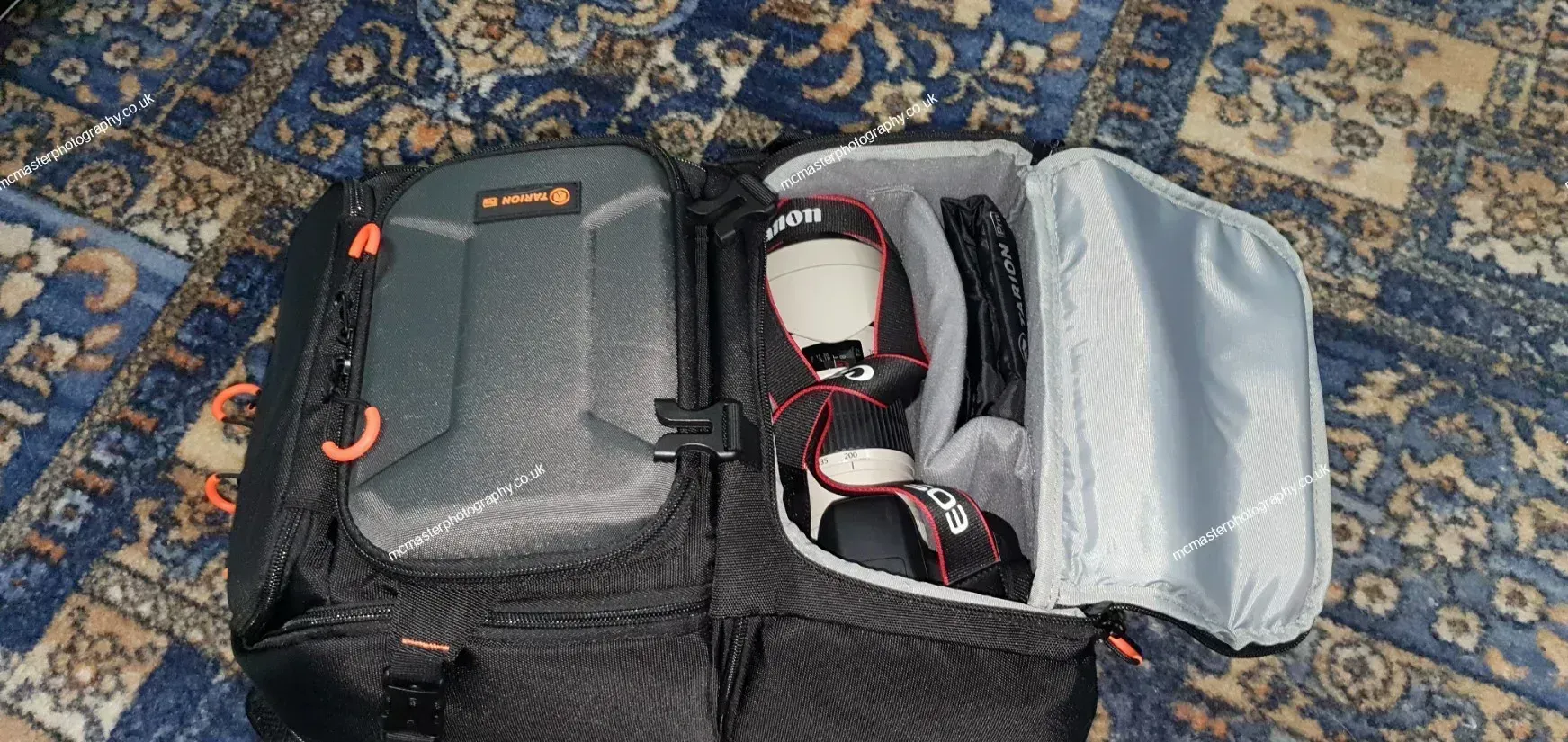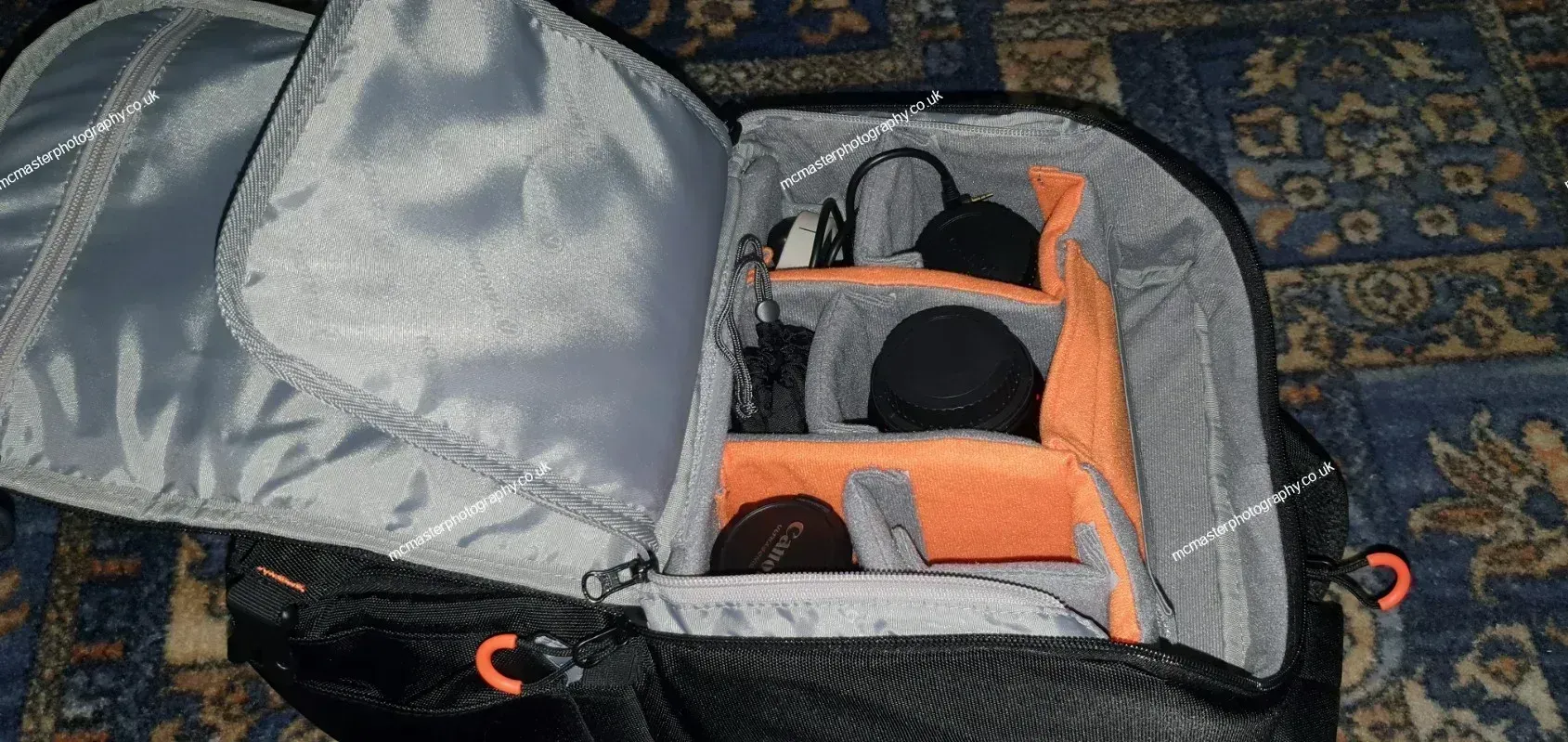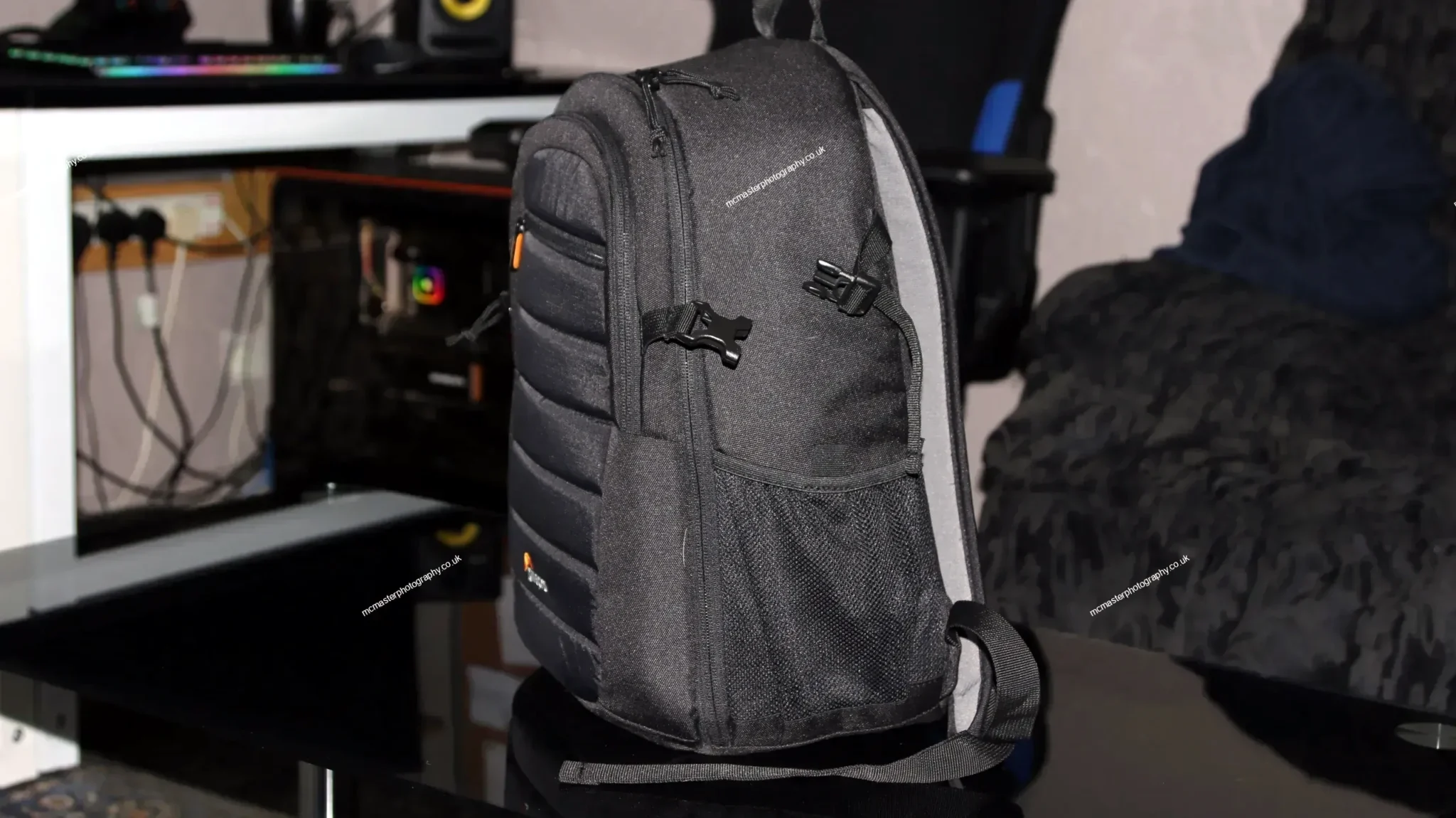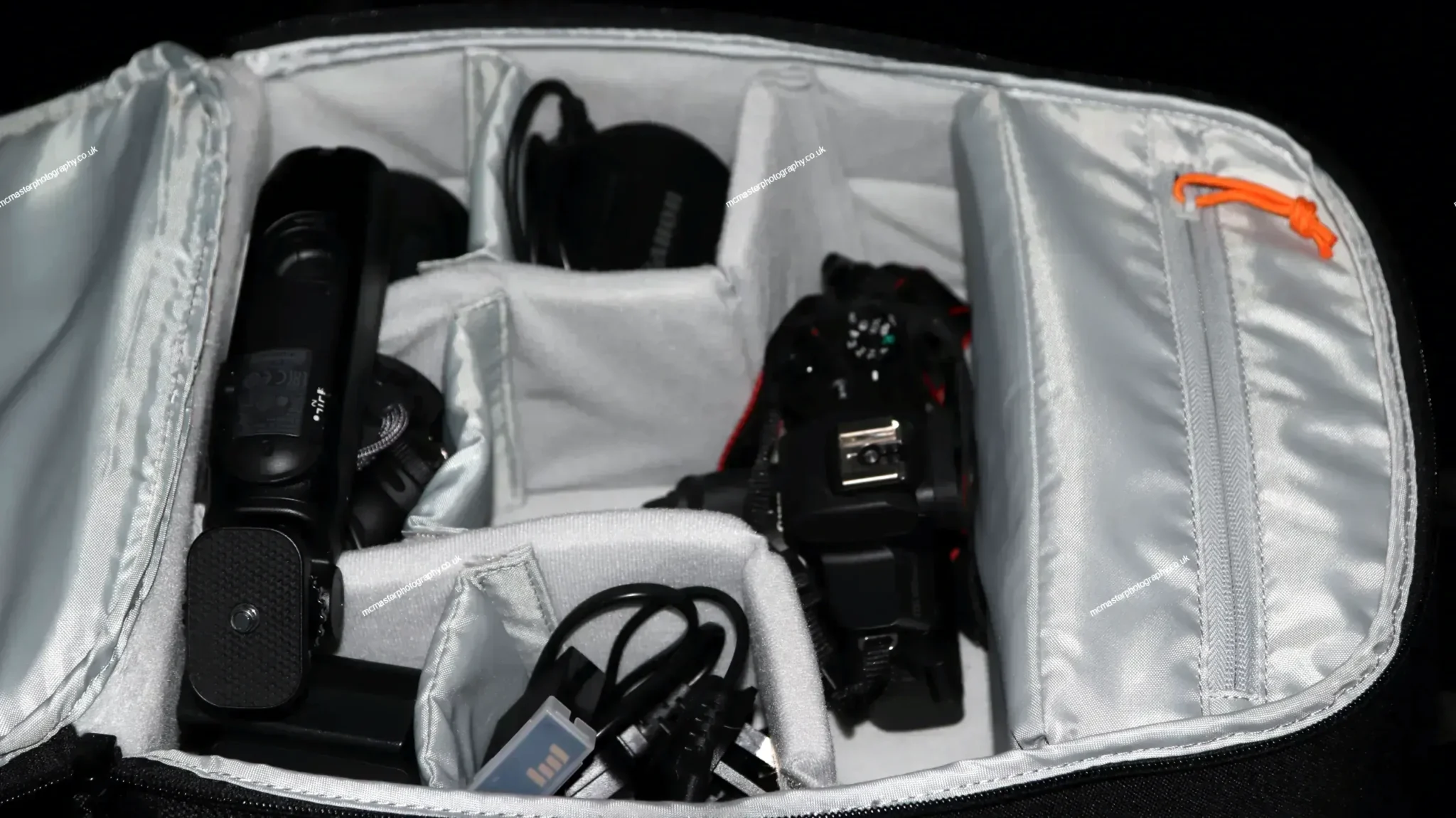The Camera Accessories and Equipment I Use
Equipment
The equipment I use is essential for all photographers. A tripod is one of them for night or low light photography when using a very low speed of 1/80 of a second or lower. You might be ok with 1/80 of a second but once you drop below 1/80 of a second it gets a bit more difficult to take photographs at night without a tripod. When holding a camera we all shake a little bit and no matter how much we try not to we cannot prevent it. For those of you who do not understand the settings on your camera and what happens with a shutter speed of 1/3 or 1/8 of a second try taking a good sharp photograph at night in low light with a shutter speed of 1/3 or 1/8 of a second without a tripod and see have a look at the photograph to see what happens. You will notice the image appears all fuzzy and the lights captured look like they moved up and down. You will be thinking why is this happening to my photographs? It’s because the shutter has opened for a long time letting in more light for longer and because the camera has moved the sensor has captured all of that movement. I suffer from a not-so-common eye disease called Keratoconus and it can be difficult to explain what it is like to a person who does not wear glasses. The image below shows what camera shake looks like and what my eyesight is like at night time without glasses. The website is not about eyesight and eye conditions but I mentioned it as an example. It’s all about having the right equipment at the right time and place as many photographers will tell you. I am not a professional photographer. I am just an amateur photographer and used a DSLR now for nearly 20 years so understand what photography is about.
Neewer Tripod
The equipment shown below is what I use from a Tripod, Camera, Lenses and Flash. There is no need to show the cameras on this page because it is all on the About page with how the journey all started back in 1990 and you can see all the cameras on that page. My tripod is a Neewer Tripod. The Neewer spotting scope tripod is made out of carbon fibre, featuring an innovative durable design that makes this model very versatile and compatible with a wide range of camcorders, DSLR cameras, spotting scopes, and GoPro gear. Its lightweight design allows users to carry it to their destination, without causing user fatigue. If you’re looking for a lighter option than what you’ll get from a standard aluminium tripod, then your search is over. This carbon fibre model weighs just three and a half pounds, is easy to use, and can turn into a monopod, making this one of the most versatile models on the market. The innovative design allows you to take this tripod pretty much anywhere. The adjustable legs are longer than what you’ll find on competing models, however, this is a huge plus for taller birders who don’t want to spend hours hunched over their spotting scope. This model is a great buy and a steal for the price. I’d recommend it to birders of all skill levels who are looking for a tripod that’s light, easy to use, and designed to last. The fact that it can be converted into a monopod is a big deal for both birders and photographers. While a monopod isn’t quite as stable as a tripod, it will come in handy if you’re trying to sight birds in an environment that’s thick with brush. The monopod is simply more portable. It also weighs just a pound, which makes transporting and hauling it a breeze.
Canon EF 70-200mm Lens
The white lens you see below is a Canon EF 70-200mm f/4 L IS USM second-hand from eBay. It cost me £450 and is in perfect condition. When I opened the box it was still like new. Not sure how much use it had but the seller said hardly used. It works perfectly and the results for photographs are excellent. The colours are sharp and bright. It is good for close photography like taking shots of flowers to blur the background making the flowers stand out. I took a few photos of the lens and you can see them below.
Park
The two photographs below were taken in a park not too far away from me and I managed to capture the trees and the curve of the pavement in the photo on the left the other photographs show two parents with a young child and you can see the difference it makes how it captures your eye. Remember photography is one where you can be in the right place at the right time to capture something. The big white lens can get a bit heavy, but you soon get used to it.
Canon EF 24-105mm
I purchased a Canon EF 24-105mm f/4 L IS USM to use with my Canon EOS 750D after doing a lot of research and watching a few YouTube videos to see what other photographers said about the lens. I then decided to purchase a used lens from eBay trusting the sellers there. The lens arrived and I unboxed it and it looked as good as new. I attached the lens to the Canon EOS 750D Camera. It came with a Lens hood. I went for a walk around my local town centre called Newcastle Under Lyme. I experimented with the lens a few times with daytime photography and nighttime photography using the tripod for long exposures.
Cat and Night Time
The image below on the left is of my cat Tommy and was taken with my Canon EF 24-105mm f/4 L IS USM lens I was close to him so I could blur the background to make the cat stand out. The results were amazing and very sharp because I used a tripod. Like every cat owner knows it’s hard work trying to take a photo of a cat because they will either ignore you or start walking towards you or just go out of the shot altogether just as you are about to take the shot. The other image on the right was taken at night with the Canon EF 24-105mm f/4 L IS USM lens and took a few attempts because it was my first attempt with night time photography with long exposures capturing the light from moving car using a tripod. The exposure time was 10 seconds with an f-stop of f/20 and ISO set to 100 so captured perfectly. The first few attempts with different exposure times and apertures gave results that were either too bright or too dark. In the end, I got the result you see in the image.
Canon EF-S 18-55 mm
I have taken many photographs using the standard Canon EF-S 18-55 mm f/4-5.6 IS STM Lens that came with the Canon EOS 750D Camera. It was the only lens I had for a few months before I purchased a zoom lens. The camera gave good results with the standard lens and was sharp and bright. There were times when I forgot to adjust the exposure with a fast shutter speed when indoors resulting in a dark photograph. With a digital SLR, you can correct the setting and reshoot the photograph. If you are outdoors and something good happens you only get one chance to take the shot so I always made sure I had a fast shutter speed with a big aperture because you never know what is going to happen. A fast-moving car, bird or cat that jumps off a wall and you try to catch that at the right second. If your shutter speed is too slow we all know what happens then. It is all going to be messed up. I also press the shutter button now and again to stop the camera from going into battery-saving mode because once the camera goes to sleep it takes s few seconds to get the camera ready and you miss that all-important opportunity to capture something special or miss the opportunity to take a photograph and that’s happened to me a few times.
Canon 750D SLR
The two photos below were taken using my Canon 750D SLR using the standard 18 to 55 mm lens seen in the photographs above. The photographs are of my female cat Daisy rolling around on the floor in my hallway. She is showing me her belly meaning she trusts me and is also responding to my voice. Cats do like to show off a little bit as you see in the photographs. I used the pop-up flash with a shutter speed of 1/80 of a second and an Aperture of F/4. The ISO speed was set to 100 with a focal length of 18mm. It was taken in the daytime meaning daylight was coming through the windows by the door behind me and you can see the shadow it created of the cat’s water bowl. You can also see a shadow created by me as well but it was difficult to avoid it. The flash helps eliminate most of the shadows in the hallway. I do have a separate flash where I can point the flash to the ceiling to bounce the light off the ceiling and that can give better results if done correctly.
Protect Your Camera and Equipment
One of the most important things you need to have is a good quality camera bag that will protect your camera and lenses because you’re carrying a few thousand pounds worth of camera equipment and the last thing you want is to end up damaging your camera or lenses by getting water in them from the rain because it can end up being expensive to repair or to replace the equipment. Not something a photographer wants. Also, make sure you carry spare batteries because the last thing you want to happen is a drained battery just as you’re going to take that all-important shot only to find out there is no power left in the battery. I know what it’s like it happened to me once but I had a spare that was fully charged. You should also remember to never charge a battery when it still has half power remaining because the cells in the battery will deteriorate and the battery will no longer charge. So it’s always best to let one of your batteries run out of power and then use the spare one because that will prolong the life of the battery. Make sure you carry lens cleaning equipment and cloths with you because you can be caught out unexpectedly with a small amount of dust and grease from fingers and hands or steam on the lens and there is nothing worse than steam and grease on a lens because it will give you bad results. I have two camera bags from for my main Digital Canon 750D SLR Camera and lenses and another for the Canon EOS M50 Mark II and all the equipment that came with it. I never take both with me because I only need one camera and mainly use the Digital Canon 750D SLR Camera. The photo below is the main camera bag I use to carry my Digital Canon 750D SLR Camera and lenses.
Main Camera Bag
The two photographs below show the different sections on the inside of my camera bag and is perfect for what I need. If I had any more lenses I would need a bigger bag or have to carry another bag. I only have three lenses and only use the two zoom lenses when outside. The standard lens is used for general and indoor photography. Every photographer knows how to use a zoom lens for close-up photography and that was something I learned by accident so never used a macro lens because a zoom lens has macro and all you need to do is zoom in and stand back and let the camera do the rest for you unless you’re taking a photograph of your pet like a cat then you somehow need to try and pursued the cat to stay where it is. Anyone who owns a cat knows what cats are like. They will do the opposite of what you want them to do.
My Other Camera Bag
Below is my other camera bag used to keep and carry my Canon EOS M50 Mark II camera and equipment. The bag is not as heavy and is a good quality camera bag. One rule with photography is to never carry more than you need but make sure you have what you need. The last thing you want to end up doing is carrying a bag that is too heavy and causes you a lot of problems or discomfort.

